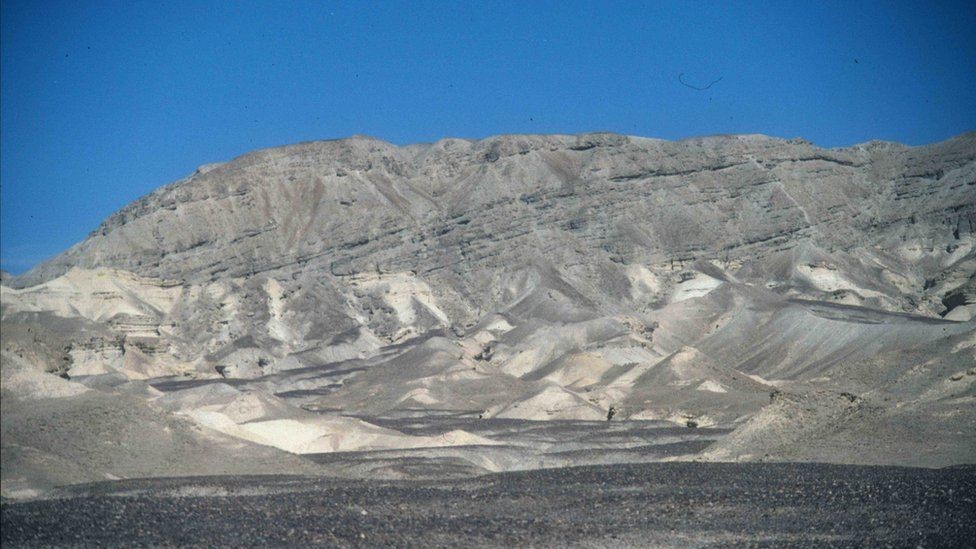-
LONDON: Indian-Origin Teen In UK Gets “Life-Changing” Cancer Treatment - 2 days ago
-
SILICON VALLEY: All About Pavan Davuluri, New Head Of Microsoft Windows - 2 days ago
-
LONDON: UK’s India Gate To Commemorate Role Of Indian Soldiers From World Wars - April 24, 2024
-
HARARE: Shri Bramha Kumar appointed as the next Ambassador of India to the Republic of Zimbabwe - April 23, 2024
-
LONDON: Indian-Origin Principal Wins UK Legal Challenge Over School Prayer Ban - April 23, 2024
-
TORONTO: Indian-Origin Doctor Needs ₹ 2 Crore For Legal Fees. Elon Musk Responds - April 22, 2024
-
KINSHASA: India-Democratic Republic of Congo Foreign Office Consultations - April 21, 2024
-
LONDON: UK Court Allows Sale Of Nirav Modi’s Luxury London Apartment - April 21, 2024
-
TEHRAN: Travel advisory for Iran and Israel - April 20, 2024
-
LUXEMBOURG: Shri Saurabh Kumar concurrently accredited as the next Ambassador of India to the Grand Duchy of Luxembourg - April 20, 2024
PARIS: Mars scientists now know where to look for life
PARIS: There’s an air of relief in the
science team running the American space agency’s (Nasa) Perseverance rover on
Mars.
The
researchers are sure now they’ve sent the robot to a location that provides the
best possible opportunity to find signs of ancient life.
“Percy”
touched down in Jezero Crater in February and ever since has
been snapping thousands of images of its surroundings.
The
interpretation of these pictures forms the basis of the first scholarly paper
to make it into print, in this week’s edition of Science Magazine.
The
analysis confirms the rover is sitting on the floor of a once great lake that
was fed by a meandering river entering the deep bowl from the west. We’re
talking of events over 3.5 billion years ago when the Red Planet’s climate was
far more benign.

From
Perseverance’s observations, it’s now certain that where the river system met
the lake water, the flows suddenly slowed and the sediment in suspension fell
out to form a delta – the kind of wedge-shaped “landform” you’ll see
all over the Earth.
It’s in
such an environment that micro-organisms could have thrived and their chemical
traces been preserved.
“People
have said to me, ‘So, what’s new here? Didn’t we know there was a delta in
Jezero Crater?’. Well, actually, we didn’t. We’d inferred from orbital imagery
that Jezero contained a delta but until you get down on the ground, you can’t
be absolutely sure. We could have been looking at an alluvial fan,” said
Prof Sanjeev Gupta from Imperial College London, UK, who is co-lead author on
the new Science paper.
An
alluvial fan is a related landform in which, generally speaking, the fan of
deposits is laid down in a much higher energy environment, such as in a flash
flood. This is not a setting as conducive to biology. Martian microbes,
assuming they existed, would have preferred the calmer, persistent waters
associated with a delta.
Perseverance
landed a couple of kilometres from the main delta formation but the rover’s
telescopic views are enticing, particularly so when it comes to one isolated
mound, or butte, dubbed Kodiak.
It’s
possible to see in this remnant some of the classic layering produced by a
developing delta.
There are
horizontal “bottomsets” that are made up of fine-grained sediments
dumped by the river furthest from its entrance into the crater lake. Above
these, are inclined “foresets” that were the sediments that tumbled
down the slopes of the advancing lobes of the delta. And higher still, are the
“topsets”, which were the sediments laid down by the river after the
delta edges had expanded off into the distance. Again, these are horizontal.
On top of
Kodiak and the main delta formation in Jezero are a lot of large boulders.
These do speak to flood events late in the history of water in the crater.

“Something
changed in the hydrology. Whether it was climate-related, we don’t know,”
said Prof Gupta. “But to move these big boulders needs something like a
flood. Maybe there were glacial lakes in the local catchment that sent these
flood waters into Jezero.
“We
see lake outbursts on Earth in places like the Himalayas. In the Ganges basin,
you get these large boulders mixed in with normal river sands and this is where
there’s been a sudden flood episode from a glacial lake,” he told BBC
News.
The
Perseverance science team will send the rover to the base of the main delta
formation to drill into what are expected to be fine-grained mudstones. They’ll
also target a ring of carbonate rocks around the edge of Jezero that likely
represent the shores of the crater lake when it was at its deepest.
The robot
is tasked with gathering and packaging more than two dozen rock samples from
various locations. These samples will be brought back to Earth in the early
2030s to be examined in the laboratories that have the expertise to determine
whether or not microscopic lifeforms ever touched the surface of Mars.

Plans for
this retrieval exercise are well advanced. It will involve Nasa and its partners
in the European Space Agency sending another rover to “fetch” the samples from wherever Perseverance
stores them in the crater.
It will
be a British-built vehicle. It will pick up the samples and transfer them to a
rocket which will then blast them into Mars orbit where a satellite freighter
will be waiting to ferry them home.
“We
are about to enter the most exciting time in the exploration of Mars,”
said Sue Horne, the head of space exploration at the UK Space Agency.
“Soon
the dream of examining specimens from the Red Planet will become a reality as
the locomotion system of the Sample Fetch Rover is tested next month.”























